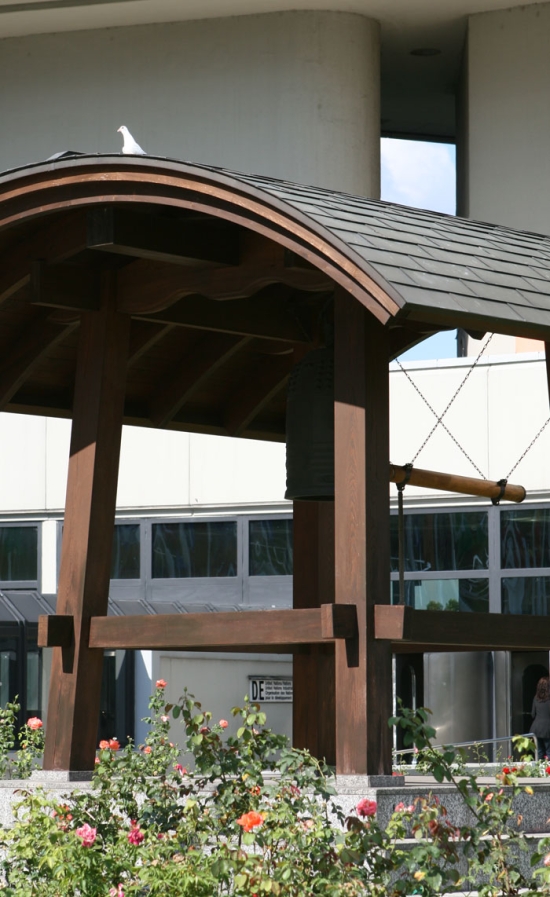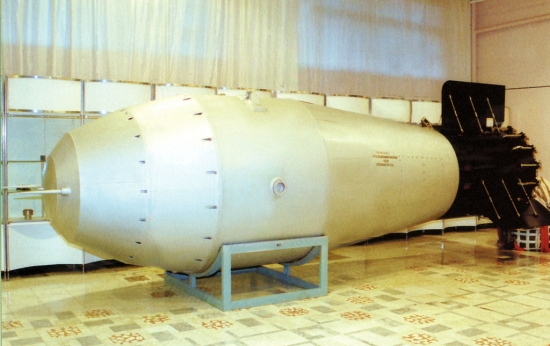The Hiroshima and Nagasaki anniversaries
Today, on 7 August 2009, a special commemorative act is held for the victims of the bombings of Hiroshima and Nagasaki on 6 and 9 August 1945. In his address to the Hiroshima Peace Memorial Ceremony on the previous day in Hiroshima, Japan, U.N. Secretary-General's Ban Ki-moon described the anniversary as "not just a day to remember the past, but a day to re-commit to a common future of peace - a world free of nuclear weapons". Ban also referred to his five-point plan introduced in October 2008 "that contains practical, realistic steps the international community can take" towards a world free of nuclear weapons. The entry into force of the Comprehensive Nuclear-Test-Ban Treaty (CTBT) is a central element to that plan. By verifyably ending all nuclear testing, both the enhancement of existing nuclear warheads as well as their initial development would be stopped - thus making any qualitative nuclear arms race impossible.
The CTBT is a first, visible step on the road towards a nuclear-weapon free world.
"Litte Boy" and "Fat Man" were only the beginning
The nuclear weapons dropped on Hiroshima and Nagasaki were the second and third nuclear explosions in the world; over 2000 would follow. The history of nuclear testing had begun a few weeks earlier, on 16 July 1945, when the United States detonated a 20-kiloton atomic bomb code-named ”Trinity“ at Alamogordo, New Mexico. This marked the beginning of a development where nuclear weapons would not only be acquired by more countries, but would also grow ever more powerful. While the "Little Boy", the weapon dropped on Hiroshima, was estimated to have yielded 15 kilotons, or the equivalent of 15,000 tons of TNT, the blast of the 1961 Soviet Tsar bomba (image) was over 3,000 times more powerful.
"Every nuclear test, that has been conducted after the bombs were dropped on Hiroshima and Nagasaki, is for the Hibakushas a painful reminder of what happened to them."
Smaller and deadlier
The focus later shifted towards miniaturizing the warheads and improving the yield-to-weight ratio. Smaller and lighter warheads can also be placed together on top of a single missile, substantially increasing the destructive power and resilience against defensive measures. All this was possible only through nuclear explosive testing. The multimedia artwork "1945-1998" visualizes the 2053 nuclear explosions conducted around the world. Japanese artist Isao HASHIMOTO "created this work for the means of an interface to the people who are yet to know of the extremely grave, but present problem of the world."
"Ensure that nuclear explosions will become and remain a matter of the past"
In her address (PDF) at the ceremony in Vienna, CTBTO Spokesperson Annika Thunborg described her strong personal impression of visiting Nagasaki and being guided around the city by a Hibakusha, a survior of the bombings. She stressed that "the stories from those who died and from those who survived the nightmares of the atomic bombings in Hiroshima and Nagasaki must be kept alive in our minds and actions," adding that "the CTBT will help build a stable framework to ensure that nuclear explosions not only will become but will remain a matter of the past."
Only nine to go for entry into force
On the occasion of the Hiroshima and Nagasaki, many international leaders reconfirmed the urgency of the early entry into force of the Comprehensive Nuclear Test-Ban Treaty (CTBT). The Treaty can enter into force only after all 44 States listed in Annex 2 of the Treaty have ratified, of which nine have yet to do so: China, DPRK, Egypt, India, Indonesia, Iran, Israel, Pakistan and the United States.
7 Aug 2009

As part of the memorial ceremony the United Nations Peace Bell was rung and 100 doves were released into the wild.

The 1961 Soviet Tsar bomba: Through nuclear testing, nuclear weapons could be developed to dwarf the Hiroshima and Nagasaki bombs in destructive power.

